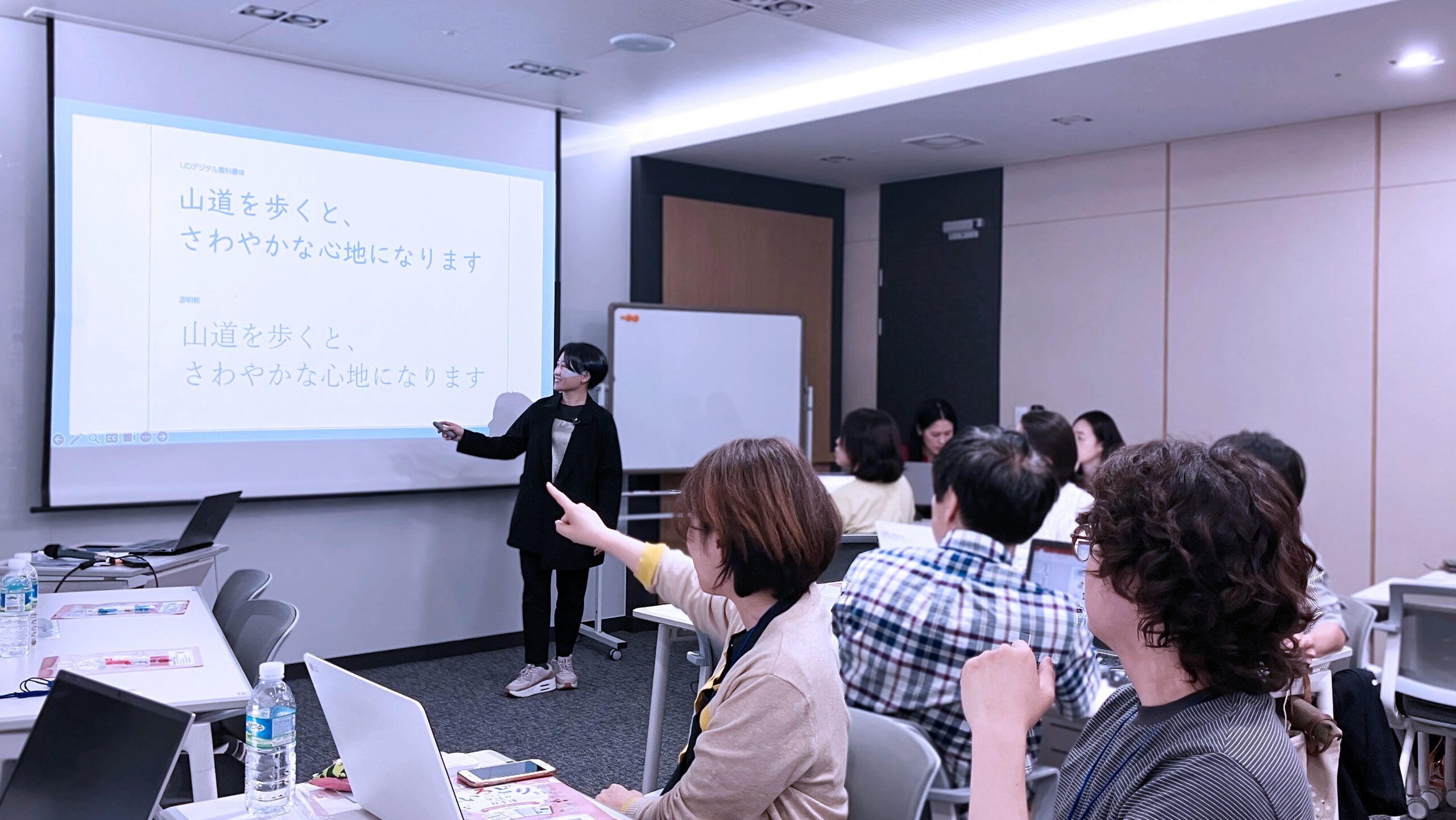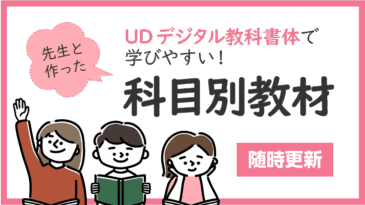— Report on the Japan Foundation Japanese Language Education Salon Workshop —
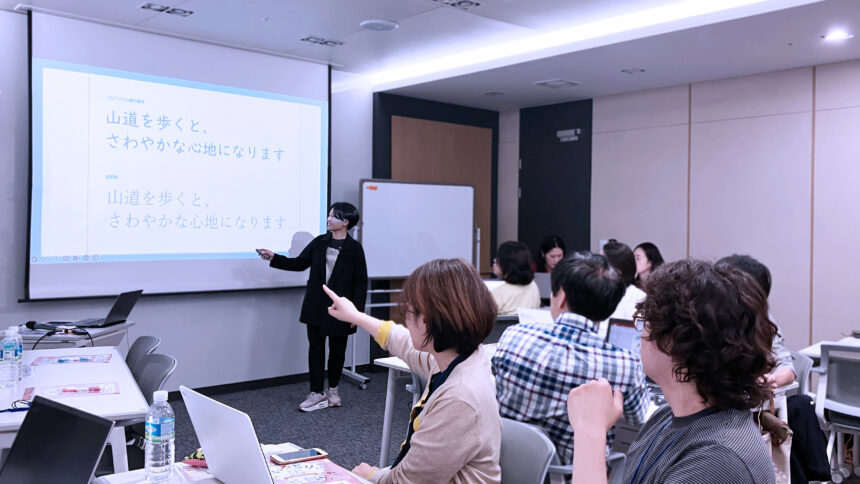
■ Font and layout improvements make learning Japanese smoother
In June 2025, Morisawa served as a guest lecturer at the Japanese Language Education Salon "Tips for Creating Communicative Materials Using Universal Design Fonts," held in Seoul by the Japan Foundation, Seoul.
A total of 33 people participated, including Japanese language teachers and Japanese language school staff from junior high, high school, and university schools in Korea.
The theme of this workshop was creating materials that "communicate" rather than "communicate." For Japanese language learners, especially beginners, the difficulty of understanding characters due to differences in character shapes is one of the challenges in progressing through their studies. Furthermore, while it is possible to understand a document written in one's native language even if it is somewhat difficult to read, when it comes to materials written in a language other than one's native language, it is not difficult to imagine how even a confusing layout can make it difficult to continue reading.
This workshop was designed to help participants learn and experience how effective font selection and layout design can be in solving these issues.
■ The reality of the field revealed through the survey
In a survey conducted before the workshop,I've only been using fonts in my own way, so I'd like to learn the basics."or"I want to know about copyright infringementWe received comments such as, "I'm so excited about this," which showed that teachers are very interested in this.
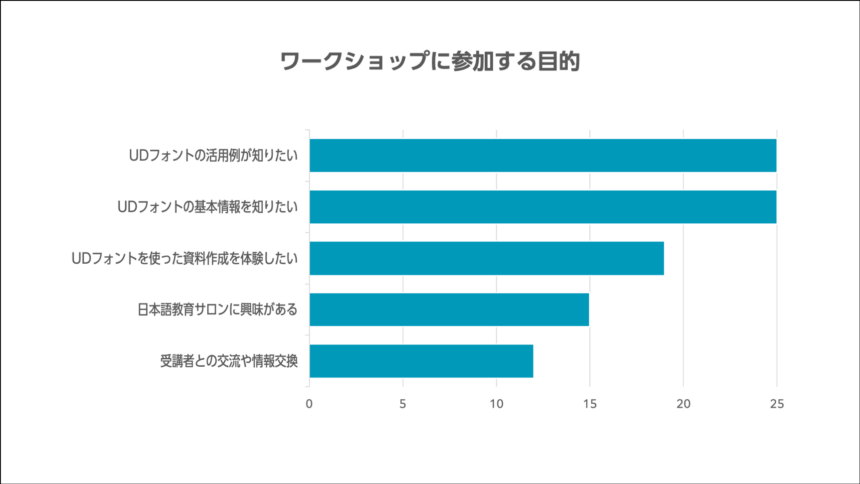
While more than half of the participants use different fonts when creating materials, only about 20% of them are actually aware of and use UD fonts. In addition, more than 70% of the participants' reasons for attending were related to their interest, such as wanting to learn basic information about UD fonts and examples of their use, or wanting to try creating materials using UD fonts. Even before speaking at the workshop, I was able to see that the teachers had a strong interest in UD fonts, which made me very happy and I looked forward to meeting them on the day.
In the survey conducted after the workshop, only about 20% of the participants in the pre-workshop survey said they were familiar with UD fonts. However, in the post-workshop survey, all participants responded that they "wanted to use UD fonts," and of those, about 80% expressed a strong interest, saying that they "really wanted to use them."
Also,Approximately 94% of respondents felt that they were able to obtain the information and content they expected.This resulted in a high level of satisfaction.
I believe that the participants gained a deeper understanding through the workshop and felt that they would like to put what they learned into practice in the future.
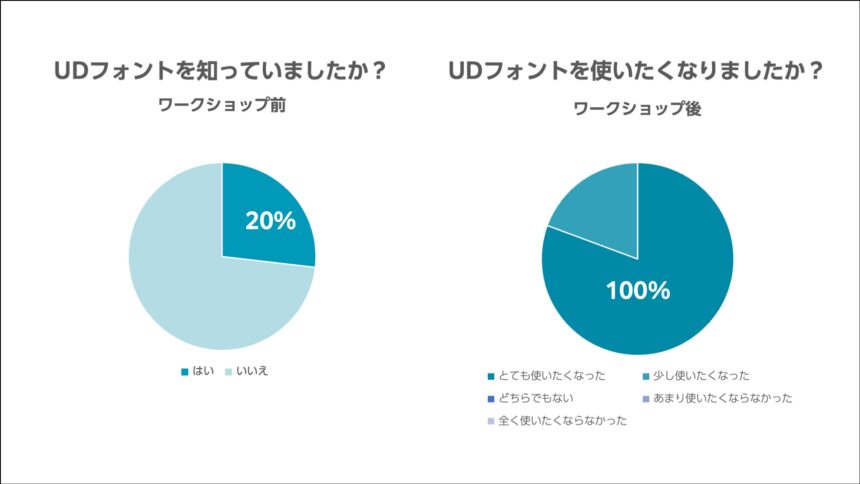
■ Workshop Structure: 3 steps to creating materials that communicate effectively
This workshop was conducted in three steps, with the aim of creating materials that would "communicate" to the learners, rather than just creating materials that "communicate" unilaterally. The workshop began with an icebreaker that made participants realize the "difficulty of communicating."
① Understand the state of communication (introduction and hands-on work)
Participants were divided into pairs, one to read and one to listen, and experienced the following two-stage work.
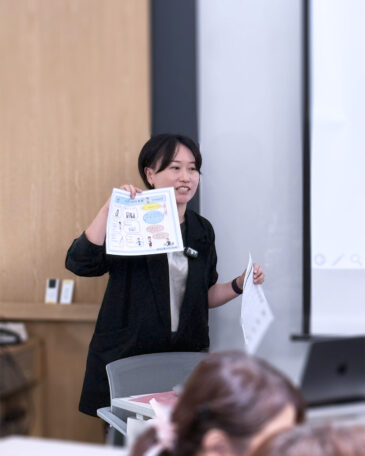
[1st time] Communicating without visual information
The speaker will read and memorize text ① for one minute and then convey it to the listener verbally.
[2nd time] Communicating with visual information:
After reading and memorizing Text 2 for one minute, explain it to the listener while showing the illustration.
Through this workshop, participants were able to experience the difficulty of conveying information through audio alone, and realized that when they were able to convey the information a second time with visual information, their comprehension and retention of the content improved significantly.
This was an introduction that allowed learners to experience what "easy-to-understand teaching materials" are, and it was an opportunity to reaffirm how important the "power of visual perception" is in education.
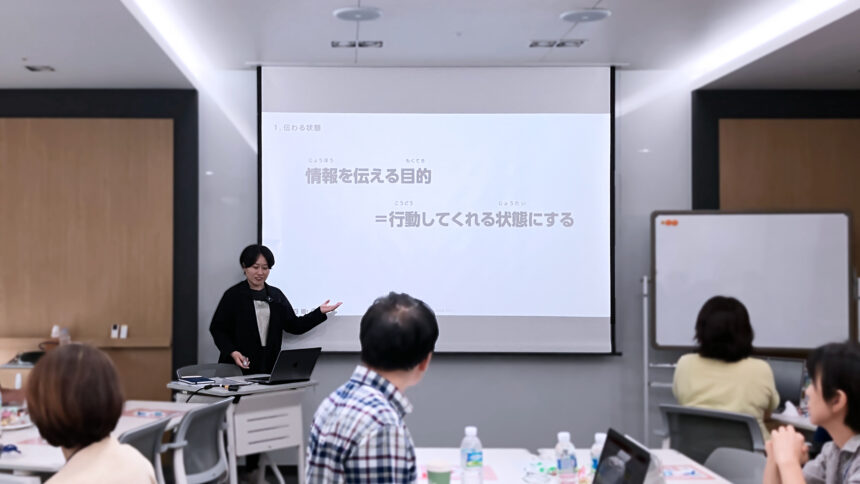
② Learn about the effectiveness of UD fonts (sharing knowledge and awareness)
Next, in terms of teaching materials used by learners whose native language is not Japanese,UD Digital Textbook FontorUD Gakusan Maru GothicHe introduced how UD fonts such as these are being used. He focused on the visibility and readability of UD fonts and explained their advantages through theory and examples.
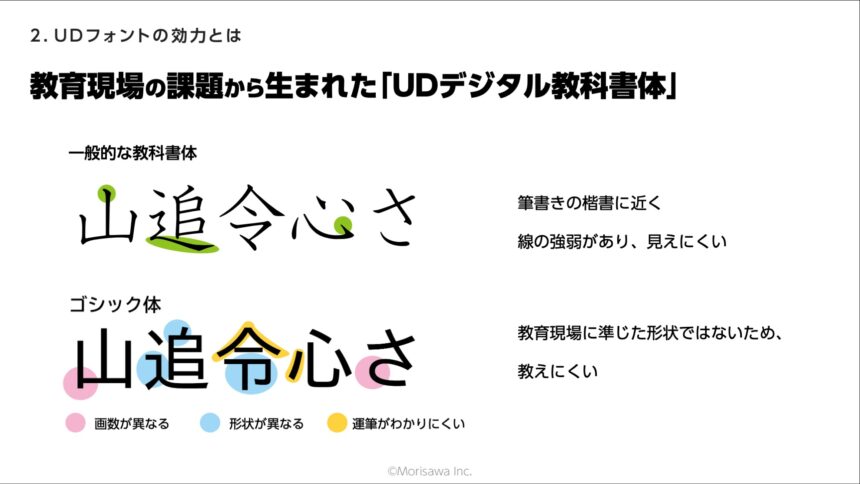
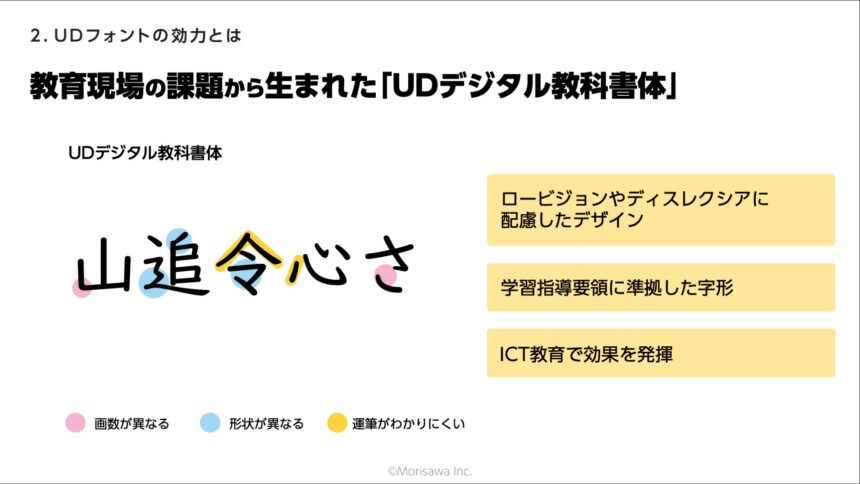
In addition, between participantsComparison WorkWe also conducted
Discussion steps
- Comparing text in "UD Digital Textbook Font" and "General Mincho Font"
- Identify differences in glyph shapes and points of confusion
- In pairs, students discuss and present their "stumbling points" and "learning risks."
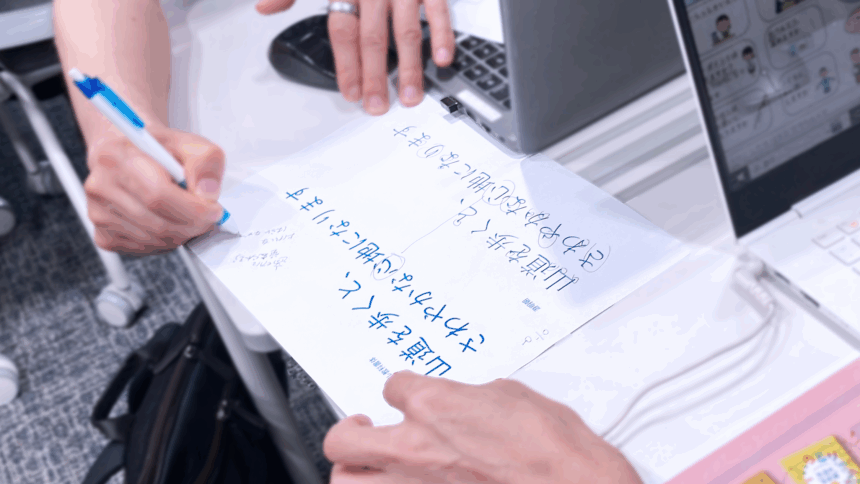
In the actual presentation,Real voices from the fieldThese were shared and there were many instances of enthusiastic nodding in agreement.
"The character 'sa' has three strokes in the UD Digital Textbook font, but two in the Mincho font. The shapes look completely different, and students get confused."
"The character design for 'kokoro' (heart) in Mincho font looks completely different from the handwritten form in the textbook font. The existence of these two types makes it difficult to learn the correct character shape."
Although these points have been pointed out before, it seems that the differences in the shapes of the characters were reaffirmed.
3. Remaking materials (practical work)
Finally, to solidify their realizations through practice, the participants used sample materials and remade them into layouts that took into consideration UD fonts and visibility.
Work: Remaking the sample teaching materials (created by our company) into teaching materials that "communicate"
Visual design skills
- How to choose a font
- Font size, line spacing, and margins
- Color usage and object balance
While mastering visual design skills, the participants experienced for themselves the before and after changes that showed how "a little ingenuity can make something so much easier to read."
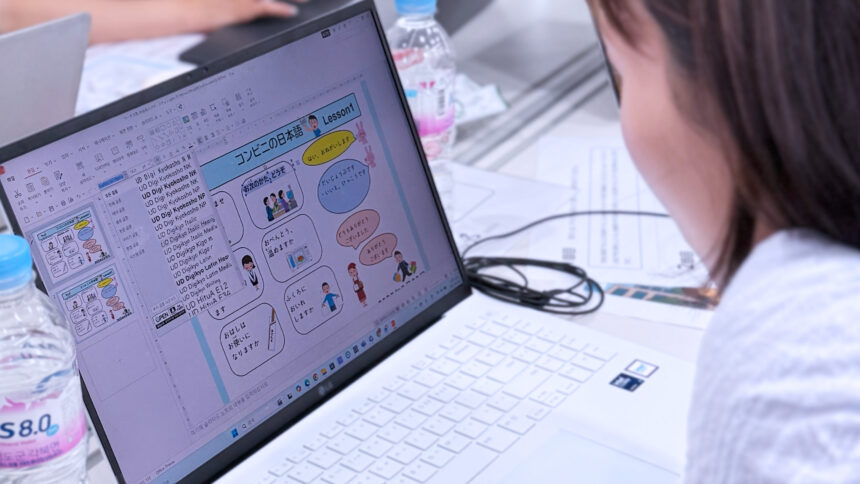
Participants commented, "It seems like something you can put into practice right away using PowerPoint","Recently, I was really struggling with fonts when creating documents, but today's workshop helped me solve the problem." They expressed their increased motivation to create materials, saying things like, "
In addition, participants said that it was useful for creating materials!The difference between using monospaced and proportional fonts affects how easily something is conveyed.It was.
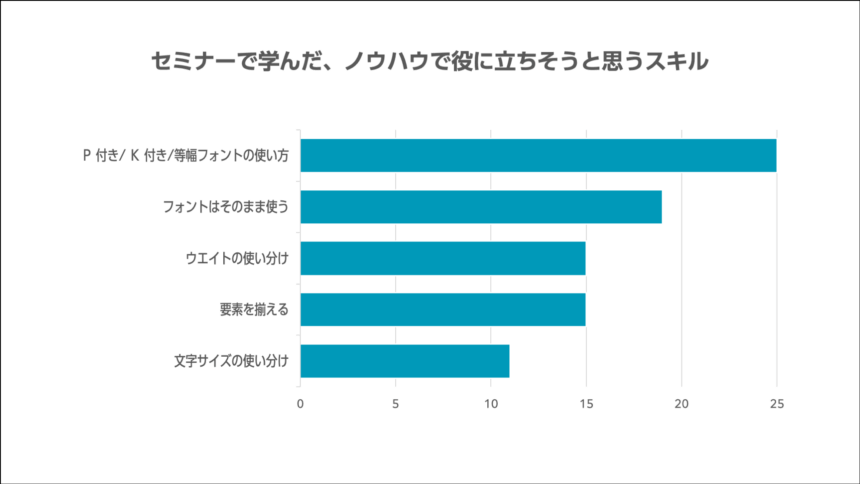
Please see below for the features of UD Digital Textbook Font and UD Gakusan Maru Gothic, which are equal-width, with P, and with K.
What are the educational versions with fixed width, P, and K? (video)
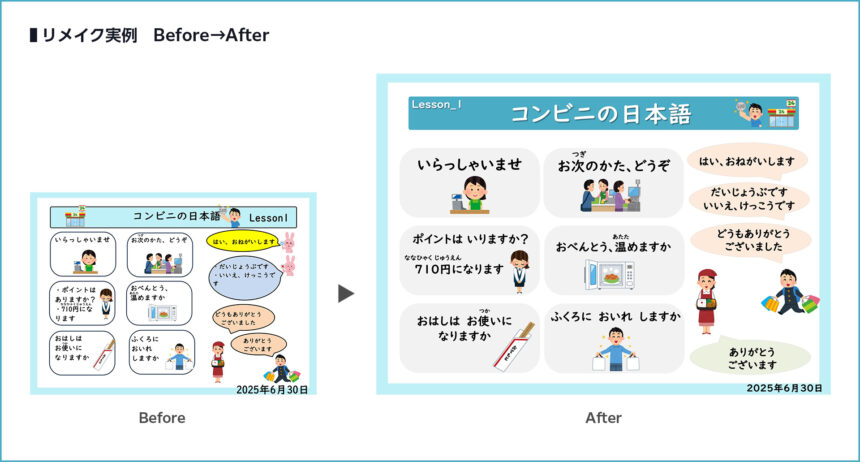
Through these three steps, participants were able to not only acquire knowledge but also reaffirm the importance of fonts and layout through practical work.
■ Comments from participants and organizers
We received a lot of great feedback from the participants. (Some excerpts)

Using fonts can now help you create more efficient lessons!
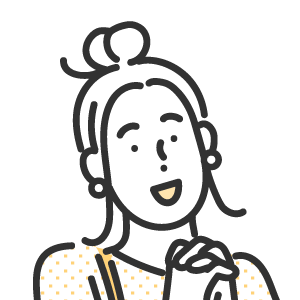
This was a very useful training session for me, as I am currently creating test questions for junior high school students.
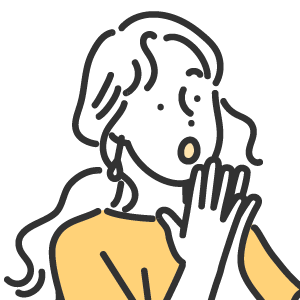
I realized that different fonts can make a big difference between a layout that is difficult to read and one that is easy to read. I learned that it is important to create materials while being conscious of what you want to communicate.
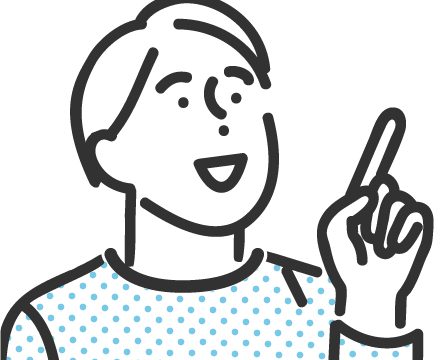
Up until now, I've just used fonts based on my intuition, thinking, "This one looks good, right?", but this time I learned the significance of each font and the process by which they were created, which was very interesting.
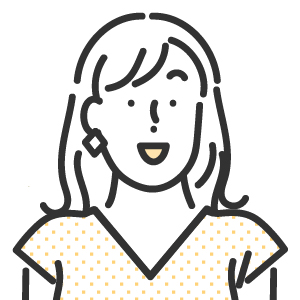
I hope that the concept of UD (Universal Design) can be reflected not only in fonts but also in the entire education system, where people from various backgrounds, environments, and abilities can learn together.
After the workshop, some people came up to talk to us directly and said things like, "I'm going to try out the skills I learned right away!" It seemed like a change in people's attitudes towards fonts was taking place, and it was a very gratifying experience for Morisawa.
In addition, Mr. Ota, Japanese Language Education Advisor at the Japan Foundation Seoul, the organizer of the workshop, spoke about the reasons for holding the workshop and the effects he expects to see.
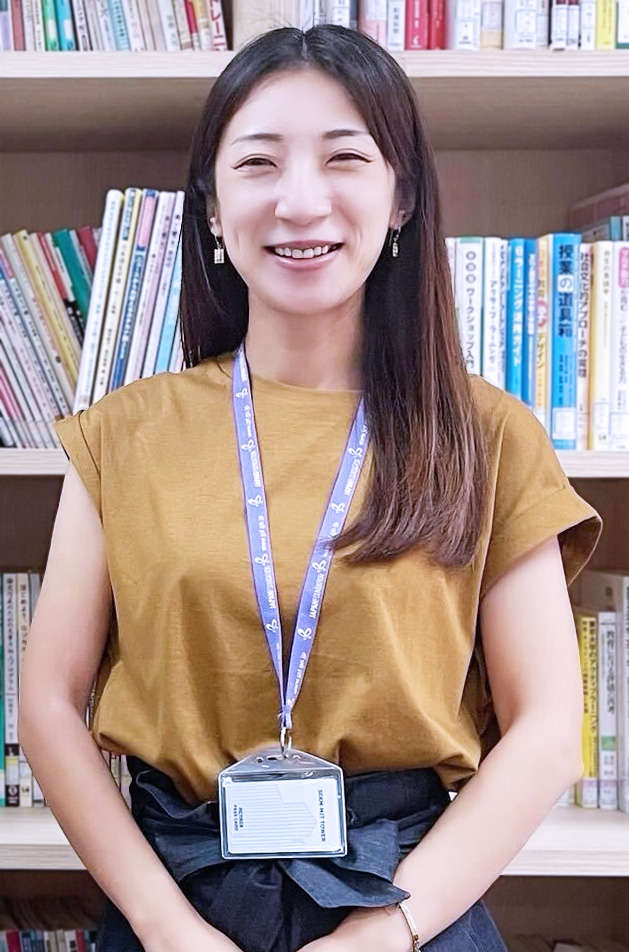
Yoshie Ota
The Japan Foundation, Seoul
Japanese Language Education Advisor
The Japan Foundation, Seoul holds a "Japanese Language Education Salon" four times a year for people involved in Japanese language education in Korea and those interested in Japanese language education, providing a learning space where they can share information useful for classes and casually interact with other people involved in Japanese language education and share information. This "Tips for Creating Communicative Materials Using Universal Design Fonts" event was also planned as it was thought to be a beneficial opportunity for people involved in Japanese language education in Korea.
There was an impression that many teachers in Korean Japanese language education use textbook fonts that are close to handwritten characters, but in a pre-sale survey, just over half of the respondents said they "use different fonts." Furthermore, only a quarter of the participants were aware of UD fonts. On the other hand, there were also several people who said, "I'd never been taught about characters or fonts before, so I thought this was a valuable opportunity to participate," and several people who were attending the salon for the first time, indicating that many people have a high interest in fonts, even if they haven't had the opportunity to do so before. After the salon, it was striking to see several people asking questions and seeking advice individually from the instructors.
We hope that this salon will serve as an opportunity to create materials that are easy to understand and learn from for all learners, not just those with difficulties.
■ Conclusion
This workshop was held with the hope that participants would learn the awareness and skills required to create materials that go one step beyond simply "communicating" and "communicate." Having spoken directly with the participants, I believe that fonts, an element that is often overlooked, have a significant impact on learners' understanding, and that this workshop may have provided an opportunity to reconsider the effectiveness of fonts and layout in Japanese language education settings.
We also believe that the many positive comments received from the participants will bring new ideas and perspectives to the field of Japanese language education in the future.
We would like to continue sharing our knowledge of fonts and visual design that support learning environments with those involved in education.
The website of the Japan Foundation Seoul, which gave us the opportunity to hold this workshop, isHere
Notice
- The UD fonts introduced in this workshop, which are also useful in Japanese language education, are available through the MORISAWA BIZ+ service (60 UD fonts are available for 330 yen per month).
For details on MORISAWA BIZ+Herefrom - We distribute free educational materials in a fun, UD digital textbook format, created under the supervision of expert teachers, as well as content that is useful in the classroom.
- If you would like your students or teachers to use UD fonts, or if you are considering introducing them in an organizational setting such as a school, please contact us using the form below.
Want to know the benefits of introducing an organization?Here

